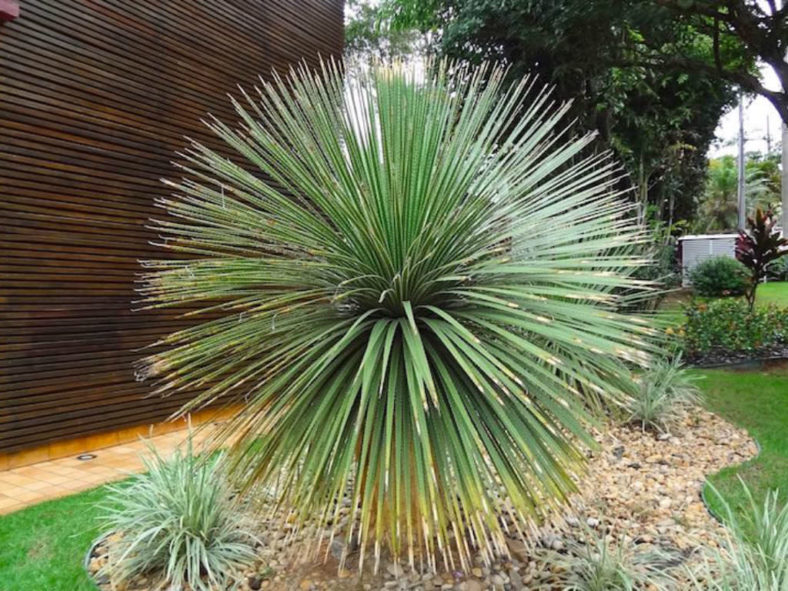Dasylirion is a small genus of 18 semi-succulent species resembling Yucca and Agave. These striking plants are native to the southern United States and Mexico. They grow in arid lands along dry washes and on rocky hillsides where soils are porous and well-drained. In their native habitats, no rain may fall for ten months or more, so they have adapted to survive such an extended drought.
Dasylirions produce enormous rosettes of narrow leaves, often stiff and serrated at the edges. Some species are significantly barbed, while others are smooth. Leaves may be just the width of a kebob skewer or flat, ribbon-like, blue, and slightly twisted. Over time the plants develop trunks that may be left natural with their cloak of dead, dry leaves or pruned clean for a more architectural form.
These plants often bloom but not every year. They are diecious, which means male and female flowers are borne on separate plants. When blooming, they send up rigid stalks to the height of a one-story rooftop. The upper half to third is thickly covered with pale yellow hooked blossoms pollinated by various flying insects. After blooming, the dried stalks are coveted for grouping in decorative urns.

Only a few species of Dasylirion are commonly grown. They can be remarkably drought, heat, and cold tolerant. The most significant in the modern design world is the hemispherical wiry Dasylirion longissimum. Valued for its flat blue leaves, Dasylirion wheeleri is preferred as an outdoor landscape plant for desert gardens with a cast-iron constitution. Dasylirion acrotrichum is preferred for its coloring, which lends a more lush character to the garden.
Small plants are relatively inexpensive, but larger ones are a fortune.
Growing Condition and General Care
Dasylirions are slow-growing, carefree, durable, drought-tolerant plants. However, they grow faster if watered well. Do not water the crown, though they rot easily. In the garden, they should be placed in a sunny, well-drained area with additional summer water in dry climates. These make great plants for xeriscape gardens and blend well in tropical or arid gardens. Dasylirions are also excellent potted specimens, and their symmetrical form provides a striking focal point.
They will tolerate some shade but grow best in full sun. Plant Dasylirions in fast-draining soil and provide little or no water in winter. Treat them like a succulent. Best where winter temperatures stay above 50 °F (10 °C) but can take some periods of frost. Plants in containers can be moved inside during longer cold spells.
Propagation
Dasylirions are easy to propagate from seeds or cuttings.
Links
- Back to genus Dasylirion
- Succupedia: Browse succulents by Scientific Name, Common Name, Genus, Family, USDA Hardiness Zone, Origin, or cacti by Genus
